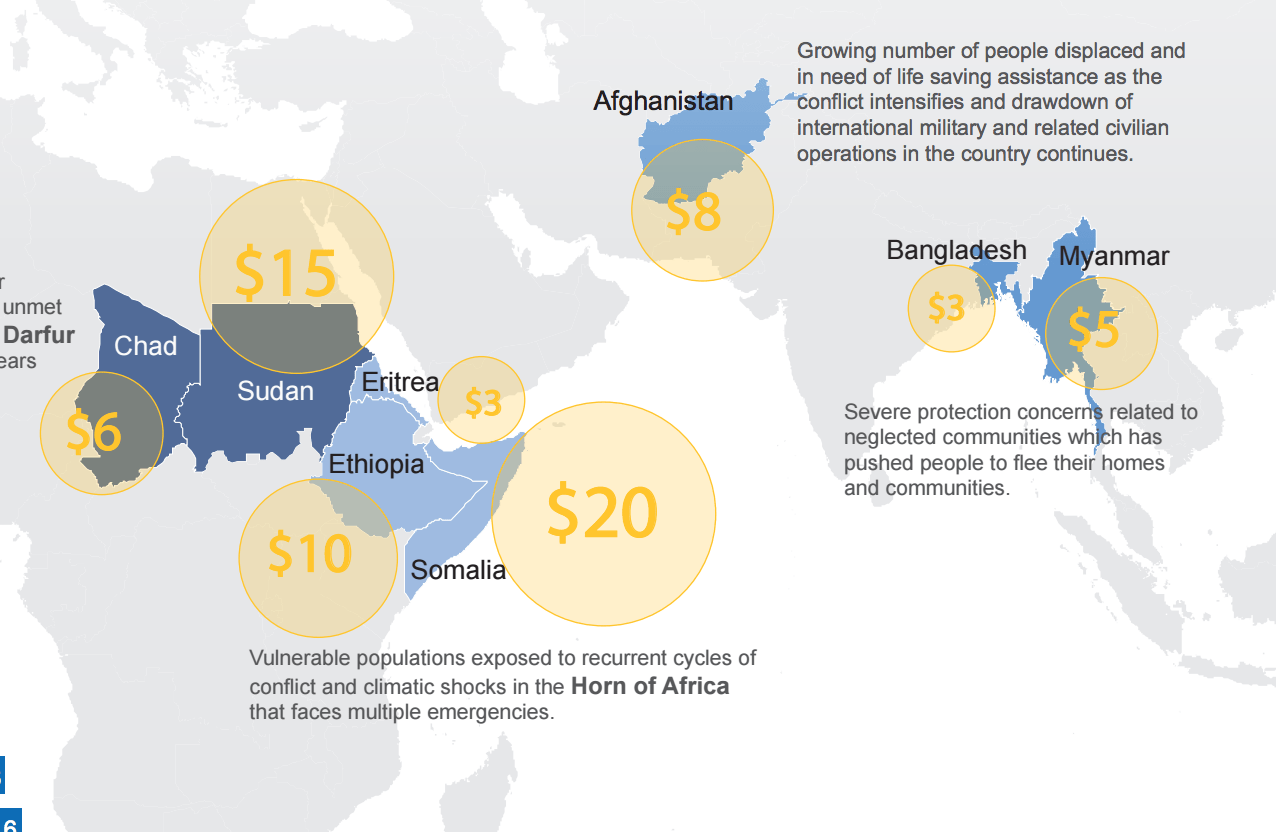Today’s map comes from a UN entity called the Central Emergency Response Fund. It shows where some $70 million of funding for humanitarian relief operations were disbursed today.
These eight emergencies are not necessarily the biggest in the world (that would be Syria, Iraq, and South Sudan). But the reason they received this funding today is because they are arguably the most neglected.
The Central Emergency Response Fund, or CERF, is a relatively new innovation created by the United Nations to address a key problem in humanitarian funding: disasters that are less politically resonant to major donors tend to receive fewer funds. The human needs aren’t much different, but for one geo-political reason or another some disasters receive more donor funds than others. The UN created CERF, in part, to correct this gap. It is a standing pool of funds to which donors contribute that is periodically released for emergencies that need the funds the most.
Here are the top 10 donors to CERF last year.

In addition to releasing funds for underserved disasters, CERF is also an emergency response fund that relief agencies can tap into when a sudden natural disaster strikes. For example, after the Nepal earthquake, CERF immediately made about $15 million available to fund the first days of the response.
The problem with CERF–as is the case with most aspects of humanitarian relief these days–is that the needs far outweigh the availability of funds.
“These CERF grants are a last resort for aid operations and represent a life-line for some of world’s most vulnerable populations,” said UN Humanitarian chief Stephen O’Brien in a statement today. “But the urgent needs of millions of children, women and men continue to increase and funding shortfalls deny them the aid, protection and dignity they deserve, no less than the rest of us. I urge donors to support relief efforts in these protracted and all but forgotten crises. Additional funding sources continue to be urgently needed, which we can immediately cash in to programmes with trusted partners to deliver on the ground – now!”
Individuals can contribute to CERF, but by far the most important source of funds are donor governments. And here, as O’brien says the scale of donations, generous as they are, are simply not keeping up with needs.
